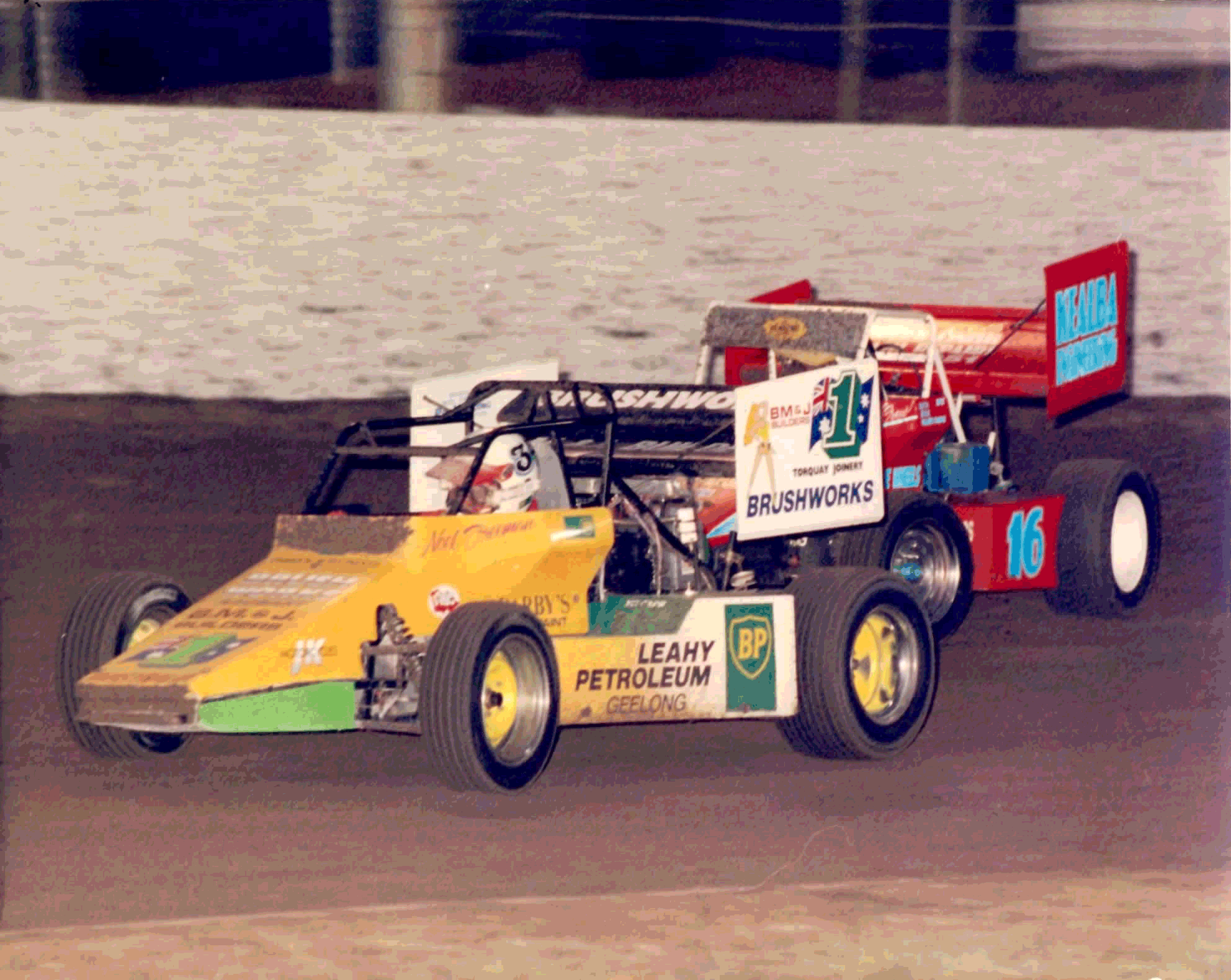

The story so far...
The GP Midget class is an open wheel speedway class of car that has a motorcycle engine mounted behind the driver and having a rear wing mounted behind the roll cage over the engine. This configuration allows the driver to sit low in the car and the car to sit low on the track, thereby giving the Grand Prix (F1) image to the class. As the shape of F1 has changed over the years so has the shape of GP Midgets, from the cigar shape to a more stream line shape. The early cars were of independent suspension design like an F1 however, development in suspension design has seen changes most cars now running beam axles both front and rear with torsion bar or coil over spring suspension similar to Sprintcars and Speedcars.




GP Midgets originated from speedway TQ’s that were very popular in the 1950’s. In Victoria, GP Midgets were first called Formula 750, which used motorcycle engines up to 750cc. It was in the late 70’s when they changed their name to Grand Prix Midgets and allowed motorcycle engines up to 1200cc that they began to flourish.
In the 80’s and 90’s Grand Prix Midgets were raced mainly on the east coast of Australia with Associations in New South Wales, ACT, Tasmania and Victoria. Today the cars are based around the states of New South Wales and Victoria.




The Victorian Grand Prix Midget Association was formed in 1977. The class mainly ran at Avalon Speedway in the early days but as it grew in popularity the class ventured to other tracks like Redline, Myrtleford, Swanhill, Hamilton, Portland, Horsham, Stawell, Bendigo, Heathcote and Laang. Then in the 90’s and 2000’s they also added tracks like Nyora, Alexandra. At present the GP’s are seen at Rushworth, Wangaratta, Wahgunyah, Avalon, Redline and Laang.
Chassis development has come a long way over the years from backyard construction using box tube mild steel through to chrome molly chassis. In the 80’s one of the biggest chassis builders was Clive Pollett from NSW who built over 30 chassis and then in the 90’s Brian Pilbeam came up with the design for the Stinger Chassis which then dominated the Victorian class for a number of years with some still competitive these days. In recent years, development has taken another step forward with a couple of new designs and manufacturers which are they are proving to be developing very competitive chassis and car packages.




These cars develop huge power to weight ratio similar to a V8 supercar and are often as quick as speedcars and super sedans. The rules for engine size are still the same as the early 80’s with engines up to 1200cc. Most common brands of engine are Suzuki GSXR 1000 and Yamaha R1’s however there are occasionally those that will try something a little different looking for a competitive edge. The cars run on methanol fuel either by carburettors or fuel injection which gives loads of horsepower in a very light car with a maximum weight of 480kg.
The cost of running in this class is quite reasonable in comparison with other classes like speedcars and super sedans. Cars cost up to $25,000 for a brand-new car package ready to race or chassis’ and second hand cars can be found at a cheaper price depending on your budget and what you’re looking for. Running costs are also often a lot less than other classes in speedway, this is mainly due to the cars being small and light which makes them easy to tow.



